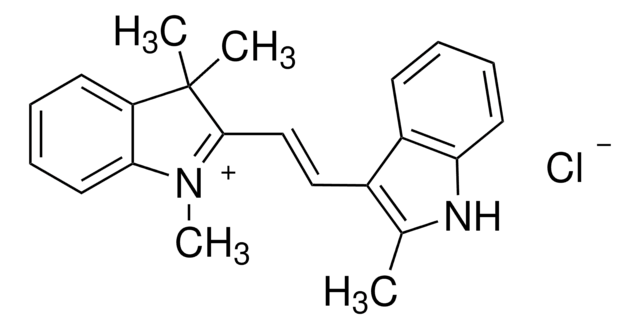21603
Disperse Orange 37
for microscopy
Synonym(s):
3-[4-(2,6-Dichloro-4-nitrophenylazo)-N-ethylanilino]propionitrile
About This Item
Recommended Products
grade
for microscopy
Quality Level
form
powder
ε (extinction coefficient)
≥250 at 415-425 nm in methanol
application(s)
diagnostic assay manufacturing
hematology
histology
storage temp.
room temp
SMILES string
CCN(CCC#N)c1ccc(cc1)\N=N\c2c(Cl)cc(cc2Cl)[N+]([O-])=O
InChI
1S/C17H15Cl2N5O2/c1-2-23(9-3-8-20)13-6-4-12(5-7-13)21-22-17-15(18)10-14(24(25)26)11-16(17)19/h4-7,10-11H,2-3,9H2,1H3/b22-21+
InChI key
KHZRTXVUEZJYNE-QURGRASLSA-N
Looking for similar products? Visit Product Comparison Guide
General description
Application
Other Notes
Signal Word
Warning
Hazard Statements
Precautionary Statements
Hazard Classifications
Skin Sens. 1
Storage Class Code
11 - Combustible Solids
WGK
WGK 3
Flash Point(F)
Not applicable
Flash Point(C)
Not applicable
Personal Protective Equipment
Choose from one of the most recent versions:
Certificates of Analysis (COA)
Don't see the Right Version?
If you require a particular version, you can look up a specific certificate by the Lot or Batch number.
Already Own This Product?
Find documentation for the products that you have recently purchased in the Document Library.
Our team of scientists has experience in all areas of research including Life Science, Material Science, Chemical Synthesis, Chromatography, Analytical and many others.
Contact Technical Service








